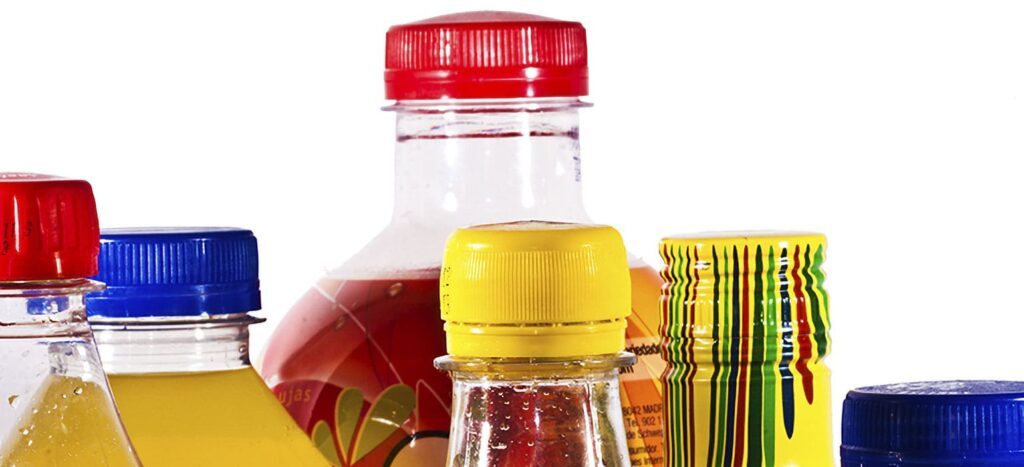Home | Knowledge Center | 2023 | Key changes to the European Food Contact Plastics Regulation under (EU) 2023/1442

Commission Regulation (EU) No 10/2011 of 14 January 2011 on plastic materials and articles intended to come into contact with food—often simply referred to as “the European Food Contact Plastics Regulation”—has been amended by the European Commission (EC) several times since its initial publication in 2011.
In September 2020, the 15th amendment—Commission Regulation (EU) 2020/1245—came into effect. As of September 2020, products complying with previous iterations of the European Food Contact Plastics Regulation were no longer permitted to be placed on the market; instead, they had to comply with the latest amendment.
On 12 July 2023, the EC published the 16th amendment to the European Food Contact Plastics Regulation—Commission Regulation (EU) 2023/1442 — with the main intention of modifying the Annex I listings of authorized substances permitted in the manufacturing of plastic food contact materials and articles (FCMs).
Annex I: Removed Entries
With the latest amendment to the European Food Contact Plastics Regulation, two substances have been removed from Annex I and are therefore no longer permitted in the manufacturing of plastic FCMs. See Table 1.
Table 1 – Entries Removed from Annex I of the Regulation | |
Removed Food Contact Material or Article | Reason for Removal |
FCM No 96 – Wood flour and fibers, untreated | Wood cannot be considered inert due to the many low molecular weight substances it contains. |
FCM No 121 – Salicylic acid | Salicylic acid was determined to be a “high priority” substance in the European Food Safety Authority’s scientific opinion published in 2020. No specific use or user was reported in the European Commission’s stakeholder consultation. |
FCM = food contact material or article.
Annex I: Revised Entries
In the latest amendment to the European Food Contact Plastics Regulation, five phthalate entries in Annex I have been revised to include lower migration limits and a new group restriction number (group 36). See Table 2.
Table 2 – Entries Revised in Annex I of the Regulation (Phthalates) | |
Revised Food Contact Material or Article | Details on the Revision |
FCM 157 – Phthalic acid, dibutyl ester (DBP) | Authorized as an additive for use in plasticizers and technical support agents in plastic FCMs, subject to specific restrictions of use and migration limits. SML = 0.3 mg/kg changed to 0.12 mg/kg |
FCM 159 – Phthalic acid, benzyl butyl ester (BBP) | Authorized as an additive for use in plasticizers and technical support agents in plastic FCMs, subject to specific restrictions of use and migration limits. SML = 30 mg/kg changed to 6.0 mg/kg |
FCM 283 – Phthalic acid, bis(2-ethylhexyl) ester (DEHP) | Authorized as an additive for use in plasticizers and technical support agents in plastic FCMs, subject to specific restrictions of use and migration limits. SML = 1.5 mg/kg changed to 0.6 mg/kg |
FCM 728 – Phthalic acid, diesters with primary, saturated C8-C10 branched alcohols, more than 60% C9 (DINP) | Authorized as an additive for use in plasticizers and technical support agents in plastic FCMs, subject to specific restrictions of use and migration limits. New SML(T) 1,8 mg/kg in group 26 Not to be used in combination with FCM substances 157, 159, 283, or 1085 (DIBP)* |
FCM 729 – Phthalic acid, diesters with primary, saturated C8-C10 branched alcohols, more than 60% C9 (DIDP) | Authorized as an additive for use in plasticizers and technical support agents in plastic FCMs, subject to specific restrictions of use and migration limits. New SML(T) 1,8 mg/kg in group 26 Not to be used in combination with FCM substances 157, 159, 283, or 1085 (DIBP)* |
FCM = food contact material or article; SML = specific migration limit; SML(T) = total specific migration limit.
* Diisobutyl phthalate (DIBP) (FCM 1085) is not listed as an authorised substance in plastic FCMs but may co-occur with other phthalates as a consequence of its use as a polymerization aid and is included in group restrictions 32 and 36 with the assigned FCM no. 1085.
In addition to the phthalates noted above, the Annex I entries in Table 3 have been revised in terms of their specific migration limits and other specifications.
Table 3 – Additional Entries Revised in Annex I of the Regulation | |
Revised Food Contact Material or Article | Details on the Revision |
FCM 793 – Triethanolamine | Removal of individual SML and reference to new SML(T) group 37. |
FCM 822 – Perchloricacid, salts(perchlorate) | Removal of individual SML and reference to new SML(T) group 38. |
FCM 1007 – Diethyl[[3,5-bis(1,1-dimethylethyl)-4-hydroxyphenyl]methyl] phosphonate | Addition of authorisation of use up to 0.2% in poly(ethylene 2,5-furandicarboxylate) (PEF) |
FCM 1059 – poly((R)-3-hydroxybutyrate-co-(R)-3-hydroxyhexanoate) (PHBH) | Addition of production method (i.e., macromolecule obtained from microbial fermentation). Addition of temperature conditions (see 2.1.4(d) of Annex V). |
FCM 1076 – Phosphorous acid, triphenyl ester, polymer with alpha-hydro-omegahydroxypoly[oxy(methyl-1,2-ethanediyl)], C10–16 alkyl esters | Addition of authorisation of use up to 0.025% in acrylonitrile-butadienestyrene (ABS) at room temperature and below. SML = 0.05 mg/kg (no change) |
FCM = food contact material or article; SML = specific migration limit; SML(T) = total specific migration limit.
Annex I: Added Entries
The latest amendment to the European Food Contact Plastics Regulation also includes various new substances authorised for use in the manufacturing of plastic FCMs. See Table 4.
Table 4 – Entries Added to Annex I of the Regulation | |
Added Food Contact Material or Article | Details on the Addition |
FCM 1078 – tris(2-ethylhexyl) benzene-1,2,4-tricarboxylate ester | Only to be used as plasticiser to manufacture soft poly(vinyl chloride) (PVC). Not to be used in contact with foods intended for infants. SML = 1 mg/kg food |
FCM 1080 – (triethanolamine-perchlorate, sodium salt) dimer | Only to be used in rigid poly(vinyl chloride) in contact with water and acidic aqueous foods. New SML(T) groups 37 and 38 Same group as FCM 793 and FCM 822, as (triethanolamine-perchlorate, sodium salt) dimer fully dissociates into triethanolamine and perchlorate. |
FCM 1081 – N,N-bis(2- hydroxyethyl)stearylaminepartially esterified with saturated C16/C18 fatty acids | Only to be used in all plastic polymers with dry foods at room temperature. SML(T) group 7 Note 30: There is a risk that migration limits may be exceeded; migration increases with the thickness of the plastic in which the substance is contained, and with a decreasing polarity of the polymer and a decreasing degree of esterification of the substance itself. |
FCM 1082 – Phosphoric acid, mixed esters with 2-hydroxyethyl methacrylate | Only to be used up to 0.35% (w/w) to manufacture polymethylmethacrylate. SML = 0.05 mg/kg food (as sum of mono-, di-and triesters of phosphoric acid and the mono-, di-, tri-and tetraesters of diphosphoric acid) |
FCM 1083 – Benzophenone3,3′,4,4′-tetracarboxylicdianhydride(‘BTDA’) | Only to be used up to 0.35% (w/w) as a comonomer in the production of polyimides for use in contact with foods for which only simulants B and/or D2 are laid down in Table 2 of Annex III at temperatures up to 250°C. SML = 0.05 mg/kg food |
FCM = food contact material or article; SML = specific migration limit; SML(T) = total specific migration limit.
Transition Period
The amendment will enter into force on 01 August 2023 (20 days after its publication). Business operators are given an 18-month transition period to adjust to the new rules of the latest European Food Contact Plastics Regulation amendment.
Plastic materials and articles which previously complied with the Food Contact Plastics Regulation before this new amendment entered into force, and which were placed on the market before 01 February 2025, may remain on the market until stocks are exhausted.
However, within 9 months of the amendment taking effect, business operators that manufacture intermediate products and substances that do not yet comply with the European Food Contact Plastics Regulation must inform users that these products, as provided, cannot be used to manufacture plastic materials and articles placed on the market after the 18‑month transition period ends.
Plastic materials and articles manufactured with Salicylic acid (FCM No 121) or Wood flour and fibers, untreated (FCM No 96), currently under product development, may continue to be placed on the market for the first time after 01 February 2025 but are subject to an application for authorization of specific uses and the application must be submitted within 12 months of the amendment coming into effect (before 01 August 2024).
Next Steps
The EC is already discussing further topics to amend the European Food Contact Plastics Regulation, as well as Commission Regulation (EC) No 2023/2006 of 22 December 2006 on good manufacturing practice for materials and articles intended to come into contact with food.
One of the EC’s main objectives is to align with Commission Regulation (EU) 2022/1616 of 15 September 2022 on recycled plastic materials and articles intended to come into contact with foods, and repealing Regulation (EC) No 282/2008.
If you find this interesting; share the article

Global Standards | CEO & Export Coaching Expert
Stand away from the traffic?
Subscribe to our Newsletter today